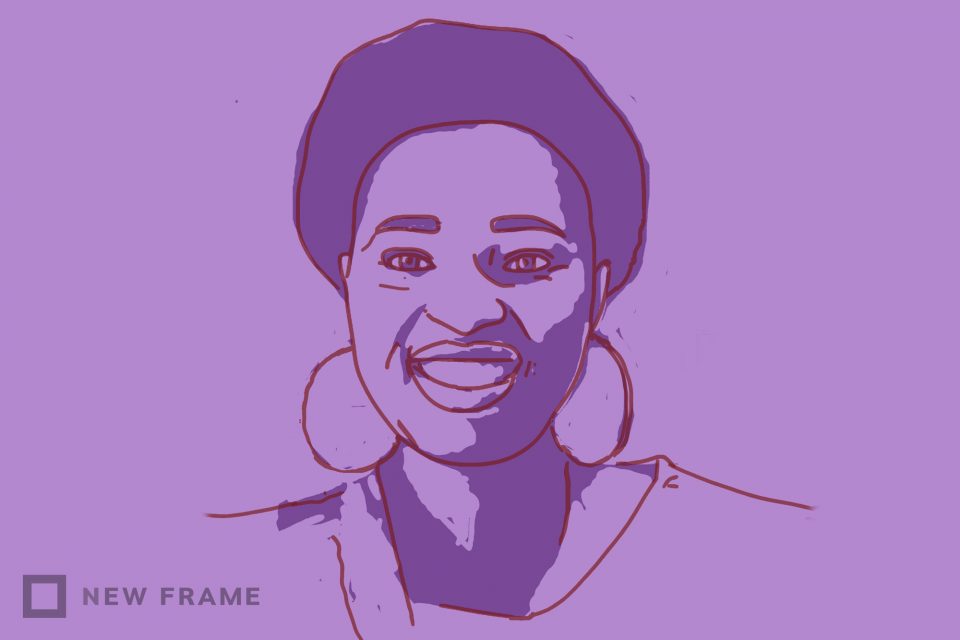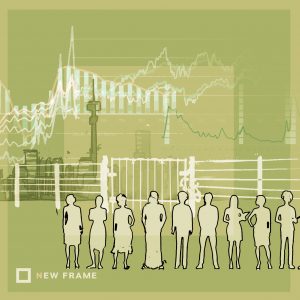SA must put women at the centre of economic recovery
The New Frame, New Economy forum on women in the economy highlights their unequal representation in the formal and informal sectors and gendered discrepancies in pay and benefits.
Author:
28 June 2021

One of the intractable truths about South Africa’s flagging economy is that it is toughest on women. They face disproportionately greater financial challenges and in an economy already scarce on jobs, are more excluded from economic participation than men.
This perilous position has intensified during South Africa’s dire economic performance since democracy. The gap between the richest and the most impoverished has grown into the greatest recorded globally. Disastrous poverty has worsened. And over the past year, the number of employed people fell by 1.4 million while an annual contraction of gross domestic product (GDP) by 7.2% revealed dwindling national output amid an already shrinking economy, further accelerating the likelihood of unemployment.
All the while, impoverished people who live on the periphery of the economy suffer immeasurably, with 11.4 million unemployed feeling the daily results of this underperformance most acutely.
The gendered economy
After women’s economic participation deteriorated in 2021 in the wake of Covid-19, non-governmental organisation the World Economic Forum reported that it will take at least 136 years to close the global gender gap.
In South Africa, inequality and poverty are concentrated among women by rigidities in the labour market that maintain disparities between what men and women earn for the same work; exclusion from productive primary and secondary sectors; lack of economic access and opportunities; and limited participation in informal sectors.

Men are 12% more likely to secure employment than women and, once employed, they enjoy better basic wages, retirement fund and medical aid contributions, paid leave and financial incentives and rewards. On average, men earn 30.3% more than women when they are paid monthly, and 28.8% when they are paid by the hour. The highest concentration of women is found in low-paying work: 97% of domestic workers are women (the majority African), for instance, while only 32% of all managers across occupations are women.
Young women are further impoverished owing to impediments in accessing factors of production such as land and capital, and a decline in informal sector participation, a sector that generally thrives with the participation of women. The number of women working in industries such as construction, mining, transport and communications, which account for 30% of gross output and employment, is paltry.
This unequal representation of women and their contribution to the economy means they remain largely excluded from advancing South Africa’s economic and developmental goals.
Related article:
While mostly unreported, economic need has skewed social and relational behaviour as the scramble for access to resources becomes transactional. Violence against women and children, for instance, is often perpetuated by women’s economic dependency on abusive partners.
The situation is bad in urban areas and worse in villages. In most rural areas, less than 50% of the working-age population is employed.
Disturbingly, fewer women now work in the informal sector than men. The informal economies – street trading of food, clothing and accessories and streetside hairdressing – have long been protective enclaves for women who struggle to enter the formal economy.
Legislation during apartheid outlawed street trading and many traders are still deemed illegal and unlicensed. Though laws have changed since democracy, some exclusionary by-laws were stubbornly retained. The most impoverished people are often considered a headache to be cleaned up by lawmakers and formal business.
Fundamental labour market failures
South Africa’s economy was in crisis before the pandemic. On the eve of the initial lockdown, credit ratings agency Moody’s joined S&P and Fitch in moving South Africa’s sovereign debt ratings to sub-investment grade, and the country’s GDP had already contracted for two consecutive quarters. We were in recession before the coronavirus emerged.
When combined with the economic shock of the government’s lockdown, the effects of the pre-existing crisis have been devastating.
South Africa’s economic drivers for the past three decades have been focused on building an economy that financial markets and institutions and the general business environment view favourably. Prior to lockdown, most of the indices pointed to poor economic growth performance, worsening poverty, widening inequality and an inability to drive and mobilise international and domestic capital for productive investments that transform the growth path.

Many heterodox non-governmental organisations, commentators and economists have said consistently that government efforts regarding economic growth are inadequate and unlikely to yield material economic recovery.
This all points to insufficient action to strengthen public finances, improve macroeconomic performance, stabilise and drive a long-term growth path, and address unemployment and inequality.
It is time to ask what is required from the National Treasury to transform the growth trajectory of South Africa. The modelling of our economy on conditions espoused by and favourable to the World Bank and International Monetary Fund has not led to growth or less unemployment and poverty.
The economic policy drivers that directly affect households need to be analysed from the view of those worst affected by the prevailing conditions. The most recent labour force survey lays bare an economy in which labour market outcomes inhibit the expansion of employment, and in which more than 11.4 million work seekers are mainly youth and women. Female and youth unemployment are at 46% and 74% respectively, while male unemployment is at 39.4%.
The fundamental market failure is the low employment coefficient in South Africa, which averages 0.5. This means formal sector employment increases by half of the real GDP growth rate. It also means that our paid labour force is growing too slowly to accommodate new entrants, resulting in a declining labour absorption rate.

The skills bias in our economy is gendered; women are more affected by a decrease in demand for unskilled labour. It also shows that the already low demand for unskilled or semi-skilled labour is contracting, worsening the likelihood of recovery.
The required economic framework for sustained poverty alleviation requires structural transformation, moving national output towards greater labour productivity while simultaneously moving capital into high productivity sectors.
These, however, must include targeted interventions for women and young people, who are most adversely affected by underdevelopment. Fewer than one in four jobs created in sub-Saharan Africa are allocated to youth. South Africa fares significantly worse as our services sector-led growth has failed to absorb entrants into the labour market. This is one of the main reasons we see ever-increasing unemployment.
Pre-existing traps of low growth, poverty, unemployment and access to infrastructure mean that economic strategy needs to focus on women and youth. The economic shock of the pandemic only worsened an already grim situation. Of the three million who lost their jobs in the wake of the lockdown, two million were women, most of them impoverished, according to the National Income Dynamics Study – Coronavirus Rapid Mobile Survey (Nids-Cram). If more than two-thirds of the jobs lost during the Covid-19 pandemic were held by women, who were likely breadwinners, measures responding to this must have a gendered, targeted approach.
Only a third of the financial relief grants after the initial Covid-19 lockdown were paid to women, despite a greater proportion of households with female breadwinners being pushed further into poverty.
Turning the tide
Any suggestion, then, that the challenges we face do not require an alternative policy reform path is severely misconstrued. All diagnostic assessments of the past two decades – whether of the formation of fixed capital, private-sector credit extension, public investment, government debt, the distribution of wealth and income or economic growth – point to worsening macroeconomic fundamentals.
In many respects, it is time for an alternative economic strategy that considers the different experiences of men and women. It needs to target interventions for those in the formal and informal sectors, while preventing wage differentials and the concentration of exclusion among women, and provide women with income support for unpaid care work.

In other respects, the fate of women would be the fate of us all. And here, the health of the entire economy requires a fundamental shift.
We need a new alternative for which the goal goes beyond satisfying our fixation on inflation targeting and garnering foreign direct investment. It is time for an economic strategy targeting no less than 6% economic growth, absorbing our more than 11 million unemployed and boosting using domestic resources.
The state must drive greater rural participation in the economy, create new sub-sectors and stimulate an industrialisation and expansion of local primary sector production of high value added goods and processed agricultural products, and secondary sector production of things like vehicle parts and accessories, renewable energy components, pig and poultry fat and agricultural and lifting machinery..
It is time to put the economy on a different path. One of high growth, high employment, inclusivity and transformation. This will require deliberate interventions and transformed economic policies that target full employment and a surge in local productivity. Nothing less is sufficient.

